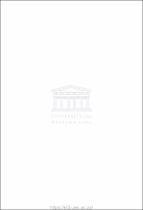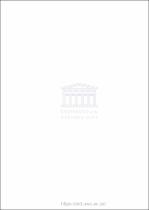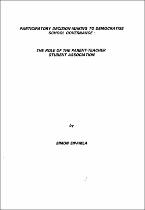| dc.contributor.advisor | Kirstein, P P | |
| dc.contributor.author | Jack, Jonathan Rajmangal | |
| dc.date.accessioned | 2021-11-24T10:16:04Z | |
| dc.date.available | 2021-11-24T10:16:04Z | |
| dc.date.issued | 1986 | |
| dc.identifier.uri | http://hdl.handle.net/11394/8586 | |
| dc.description | Magister Educationis - MEd | en_US |
| dc.description.abstract | Teachers and teachers' organisations have always been an intergral part of any community. More so in the Indian Community. The Indian teacher has always commanded great respect from his community and thus he has wielded considerable influence over it. Since the early days of Indian immigration to this country, the Indian teacher has played a vital role in all but political activities. In very recent times, however, he has taken a lively interest in the political aspirations of his people within the framework permitted by his conditions of service. The Indian Teacher is a member of the largest group of highly educated men and women in his community. No wonder, then, that the community has always looked to teachers and their organisations for leadership. The establishment of the Natal Indian Teachers' Society in the 1920s arose out of a community need in that a reception committee was required for holding celebrations on the occasion of the visit of the Prince of Wales to South Africa. From then on the Natal Indian Teachers' Society continued to make representations on behalf of its members and the community for a a better deal in education. This was not always forthcoming from the authorities. Hence, the teachers and the community banded together to provide and build schools for themselves out of the monetary contributions of teachers and parents. The Natal Education Department in its biased treatment of teachers in aided schools, who it claimed were the responsibility of the grantees and managers, led teachers to form the Natal Teachers' Union which was run on trade union lines. A vigorous fight was waged by this Union for service conditions equal to those of teachers in government schools. The Education Department relented when it recognised the rights of the members of the Union. Thus the Union disbanded and its members rejoined the Natal Indian Teachers' Society. Thereafter the Natal Indian Teachers' Society grew from strength to strength. The inauguration of the branch system gave rise to broader representation and rapid growth. The formation of the Natal Indian Schools' Building Trust saw tangible evidence of of the commitment of the Society towards solving the accommodation crisis in Indian Schools. Upon the transfer of control of education to the Department of Indian Affairs in 1966, The Natal Indian Teachers' Society changed its name to the South African Indian Teachers' Association in order to enable Indian teachers throughout the Republic to become members. In 1979 the Association changed its name to the Teachers Association of South Africa, thus dropping the racial tag attached to its previous name. This meant that membership was open to all teachers. Over the twenty years of its existence as a national body the Association has developed into a vigorous institution. Its growth in stature must be measured by its multifarious activities which have benefitted Indian education. As a result of its representation in various departmental committees
the Association is able to make valuable contributions where its opinions are valued. The Association's own Subject Societies make a valuable contribution towards education by means of their various publications. The Association's concern for the welfare of its members is illustrated
by the representations it has made to the authorities on their behalf. In some instances legal recourse was necessary. That a great deal of success has been achieved by the Association there is no doubt. That education for Indians has made vast strides in the last 60 years there is no about. This is due in great measure to the untiring efforts of the Teachers Association of South Africa. The Association will still continue its fight for a better deal, not only for Indian teachers and Indian education, but for all South Africans. | en_US |
| dc.language.iso | en | en_US |
| dc.publisher | University of the Western Cape | en_US |
| dc.subject | Indian immigration | en_US |
| dc.subject | Teachers' Educational and Professional Association (T.E.P.A) | en_US |
| dc.subject | Cape Teachers' Association (CTA) | en_US |
| dc.subject | Transkei Teachers' Association (TTA) | en_US |
| dc.subject | Cape Native Teachers' Association (CNTA) | en_US |
| dc.subject | Natal African Teachers' Union (NATU) | en_US |
| dc.subject | National Indian Medical Scheme (NIMS) | en_US |
| dc.subject | Tricameral | en_US |
| dc.subject | System Education Department | en_US |
| dc.subject | Joint Council of Teachers' Associations of South Africa ( JOCTASA ) | en_US |
| dc.title | The history of the teachers association of South Africa and the role it played in the develpment of education for Indians in South Africa. | en_US |
| dc.rights.holder | University of the Western Cape | en_US |




